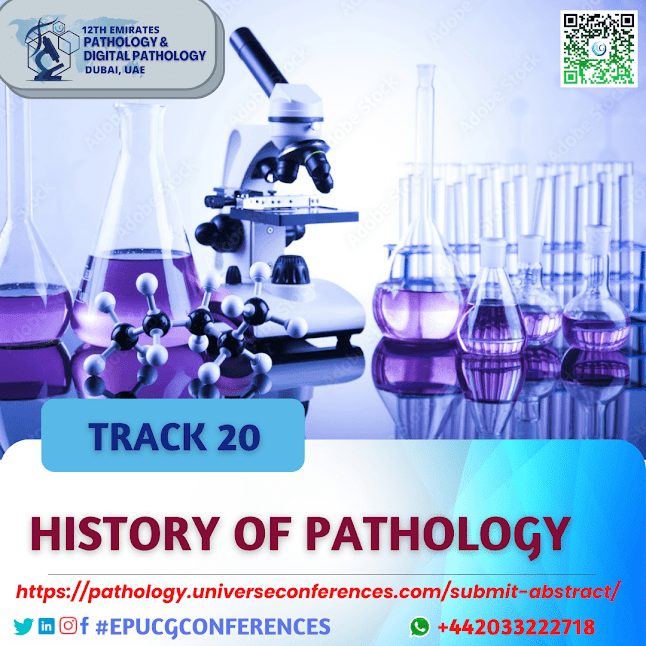Live impressions from the Utilitarian Conference: The future of pathology will be digital
What is Pathology?
Pathology is the study of disease it is between science and medicine and Doctor and scientist working in pathology are experts in illness and disease
An affiliated scientific study of disease processes whereby the causes, mechanisms, and extent of the disease are examined. Areas of study include cellular adaption to injury, necrosis (death of living cells or napkins), inflammation, crack mending, and neoplastic (abnormal new growth of cells). Pathologists specialize in a wide range of conditions including cancer and the vast maturity of cancer judgments are made by pathologists. The cellular pattern of samples is observed under a microscope to help determine if a sample is cancerous. Pathologists also employ inheritable studies and gene labels in the assessment of colorful conditions. You can gain more knowledge to attend the CME/CPD accredited 11th Emirates Pathology & Digital Pathology Utilitarian Conference on May 9–10, 2022, Online
No1. Surgical Pathology
Surgical Pathology is the most significant and time-consuming branch of pathology with a primary focus on examining tissues with the naked eye or under a microscope for a definitive opinion of the disease. Surgically removed samples are entered from sources similar to small necropsies of skin, core necropsies for the opinion of cancer, and the operating room where tumors are removed. Surgical pathology involves macroscopic (gross) and Betsy (histologic) analysis where the molecular parcels of samples are assessed by immunohistochemistry or other laboratory tests.
Histological sections of the tissue are reused for Betsy’s viewing using either chemical obsession or frozen section. Frozen section processing involves indurating the tissue and generating thin frozen slices of the instance which are mounted onto glass slides. Before viewing the tissue under a microscope, slides reused by chemical obsession or frozen section are moreover stained with chemicals or antibodies to reveal cellular factors.
Necropsy is a largely technical surgical procedure that’s performed by a pathologist and consists of a thorough examination of a cadaver to determine the cause and manner of death and to estimate any complaint or injury that may be present. The top end of necropsy or posthumous examination is to determine the cause of death, the state of health of the person before they failed, and whether any medical opinion and treatment before death were applicable. You can have the opportunity to speak/listen/exhibit, visit our website https://pathology.universeconferences.com/, Save the dates, May 9–10, 2022. Start preparing your abstracts, poster and don’t forget to tell your colleagues — this is going to be the best Pathologists conference ever!
No2. Anatomical Pathology
Anatomical Pathology is the branch of pathology that deals with the tissue opinion of the disease. For this, Anatomical Pathologists need a broad- grounded knowledge and understanding of the pathological and clinical aspects of numerous conditions.
The tissue on which the opinion is made may be vivisection material taken from a case in the operating theatre, on the ward or from a necropsy (necropsy). The ultimate is a small but important element of the work for establishing the cause in cases of unanticipated death, for examining complaint progression, including the response to treatment or lack of a response, and in felonious cases (forensic pathology) helping police in their examinations. The work of utmost Anatomical Pathologists is, still, on the tissue from living cases. A large part of this is the discovery and opinion of cancer. A tissue opinion is essential before starting treatment involving major surgery, radiation or medicines, treatments which may have major side goods.
№3. Clinical Pathology
A Clinical Pathologist is familiar with the major aspects of the clinical branches of laboratory drugs. He or she’s generally trained in chemical pathology, microbiology, hematology, and blood banking, though not in as important detail as subspecialists in each field. Their part is analogous to General Pathologists but unlike General Pathologists they don’t do Anatomical Pathology. A clinical pathologist would generally work in a medium-sized private practice, community sanitarium, or a large country city or other-metropolitan center. For problems demanding specific moxie, they would consult with further specialized associates. Some, still, also work as part of the platoon in large metropolitan public or private practices particularly in managing common high volume tests from further than one discipline. Know more & gain pathology knowledge at Utilitarian Conference.






Comments
Post a Comment